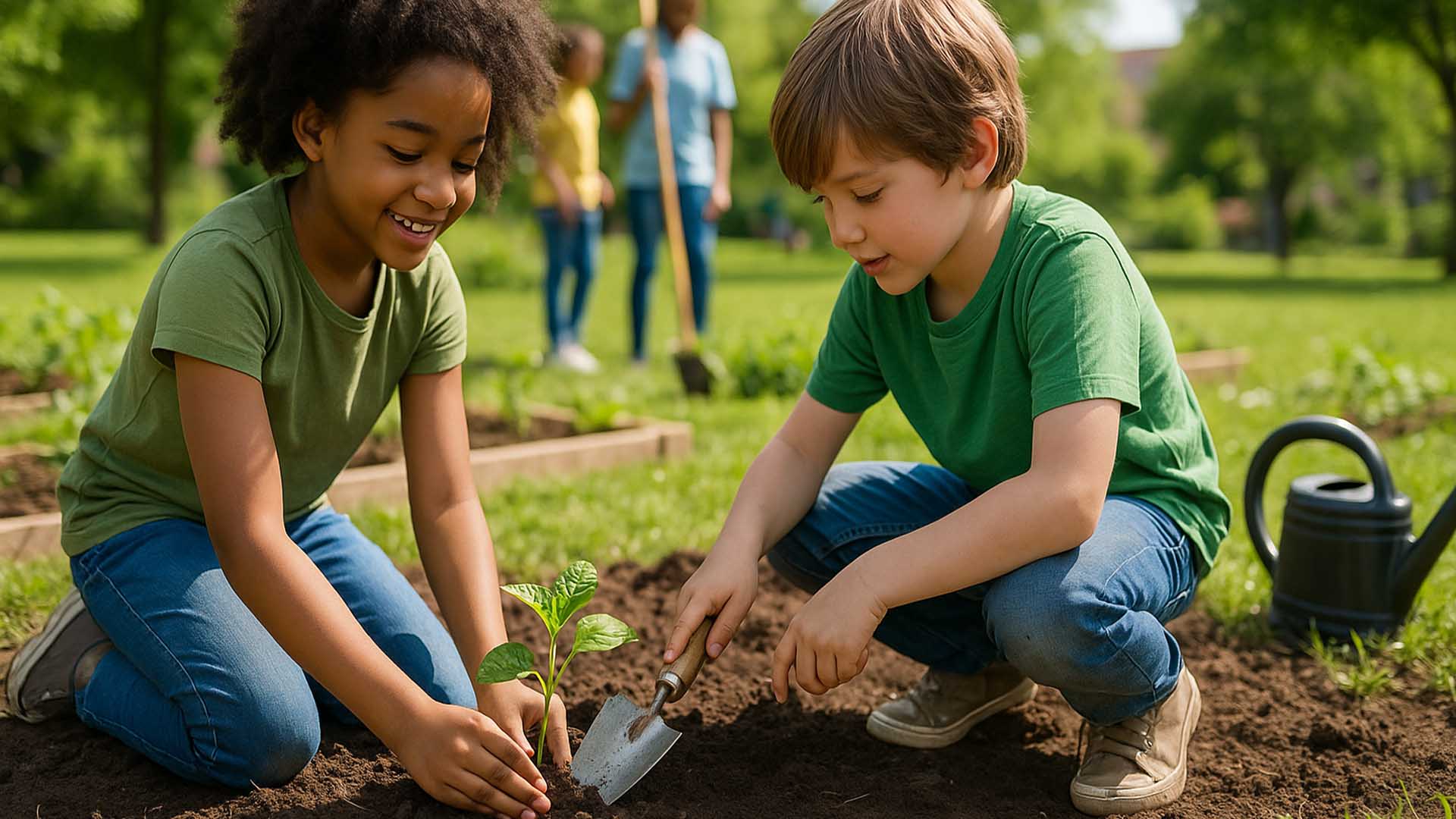In a world increasingly aware of environmental challenges and the importance of strong communities, teaching children about sustainability and community involvement is more crucial than ever. These concepts not only foster a sense of responsibility towards the planet but also help children develop empathy, social skills, and a connection to their local environment. This article explores how to introduce young minds to the principles of sustainability and the value of community-centered growth.
What is Sustainability for Kids?
Sustainability, for children, is about understanding how our actions today affect the world tomorrow. It’s about using resources wisely so that there’s enough for everyone, including future generations [1]. This can be broken down into simple, actionable ideas:
- Reduce, Reuse, Recycle: Teaching children to minimize waste, find new uses for old items, and properly sort recyclables [2].
- Conserving Resources: Understanding the importance of saving water and electricity, and choosing renewable energy sources like solar and wind power [1].
- Protecting Nature: Learning about ecosystems, wildlife, and how to care for plants and animals.
Engaging Kids in Sustainability
Making sustainability fun and tangible for children is key. Here are some ways to involve them:
- Gardening: Planting a small garden teaches children about where food comes from, the importance of healthy soil, and the life cycle of plants [2].
- Nature Exploration: Regular visits to parks, forests, or even a backyard can foster an appreciation for nature and its delicate balance [3].
- DIY Projects: Turning old items into new crafts encourages creativity and reduces waste.
- Energy and Water Audits: Involving children in checking for leaky faucets or turning off lights helps them understand resource conservation in a practical way.
The Importance of Community Involvement
Community-centered growth for children means fostering a sense of belonging and encouraging active participation in their local community. It’s about understanding that they are part of something larger than themselves and that their actions can make a positive difference [4].
How Kids Can Get Involved in Their Community
Even young children can contribute to their community:
- Volunteering: Simple acts like helping at a local food bank, cleaning up a park, or visiting elderly neighbors can teach compassion and civic responsibility [5].
- Community Events: Participating in local festivals, parades, or charity runs helps children connect with their neighbors and feel part of a collective effort.
- Acts of Kindness: Encouraging small acts of kindness, like drawing pictures for first responders or writing thank-you notes to community helpers, reinforces positive social behavior.
- Learning About Local Heroes: Reading about people who have made a difference in their community can inspire children to become active citizens.
Q&A
Q1: What is the easiest way to explain sustainability to a young child?
A1: Explain that sustainability is like being a superhero for the Earth! It means taking care of our planet so that it stays healthy and happy for us and for all the kids who will live here in the future.
Q2: How can I encourage my child to recycle?
A2: Make it a game! Have separate bins for different recyclables and let your child be in charge of sorting. Explain what happens to the recycled items and how they help the environment.
Q3: Why is community involvement important for children?
A3: Community involvement helps children understand that they are part of a larger group. It teaches them empathy, social skills, and how to work with others to make their neighborhood a better place. It also builds a sense of belonging and responsibility.
Sources
[1] Britannica Kids – Sustainability: https://kids.britannica.com/kids/article/sustainability/631786
[2] GoHenry – Sustainability for kids: 20 activities to help them learn: https://www.gohenry.com/us/blog/community/sustainability-for-kids
[3] Pacific Science Center – Teaching Kids About Sustainability Through Exploration: http://pacificsciencecenter.org/blog/sustainability-exploration/
[4] HeadStart.gov – Community Engagement: https://headstart.gov/community-engagement
[5] Scholastic – 8 Super Community-Service Starters for Kids: https://www.scholastic.com/parents/school-success/school-life/extracurricular-activities/8-super-community-service-starters-kids.html








0 Comments